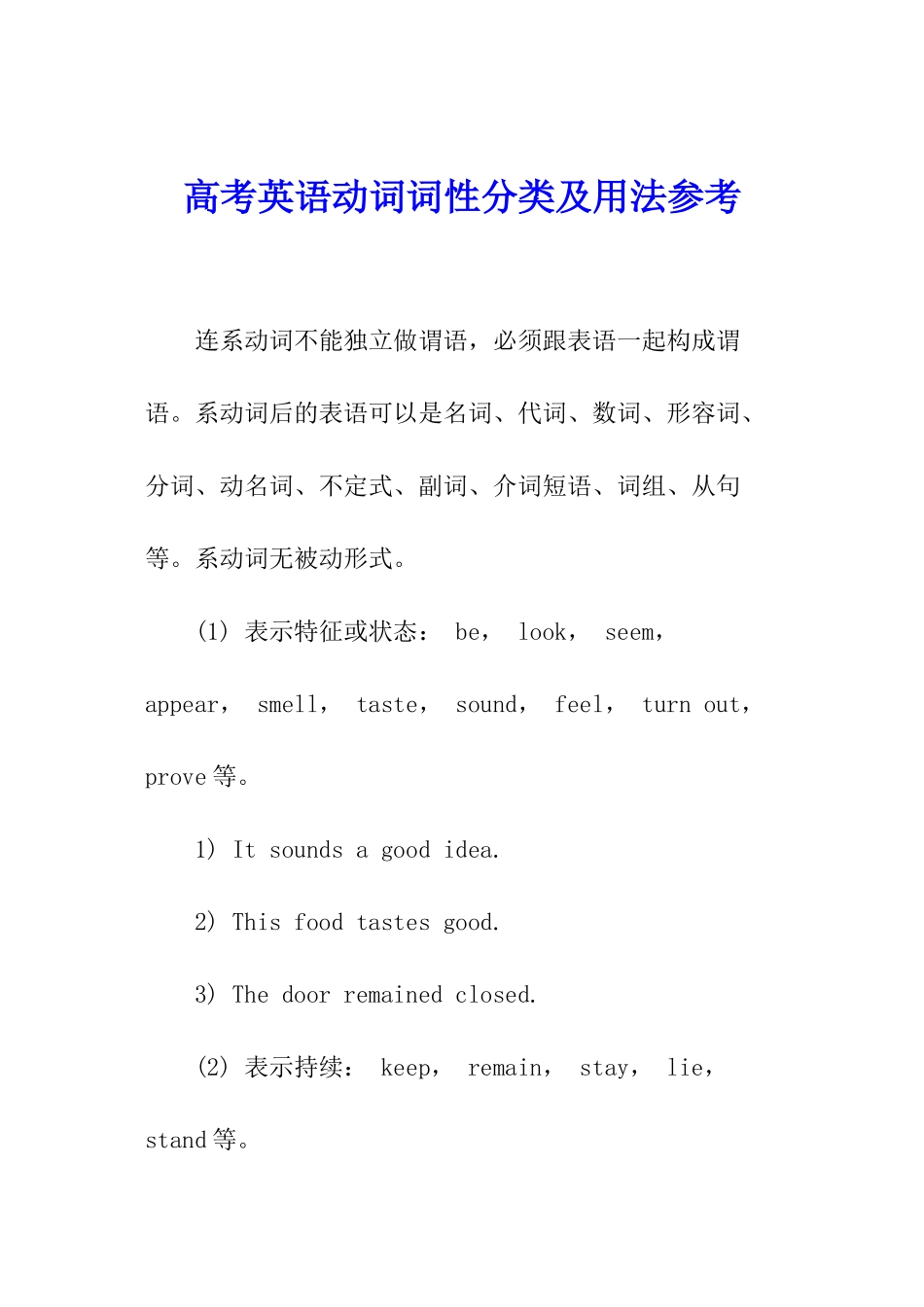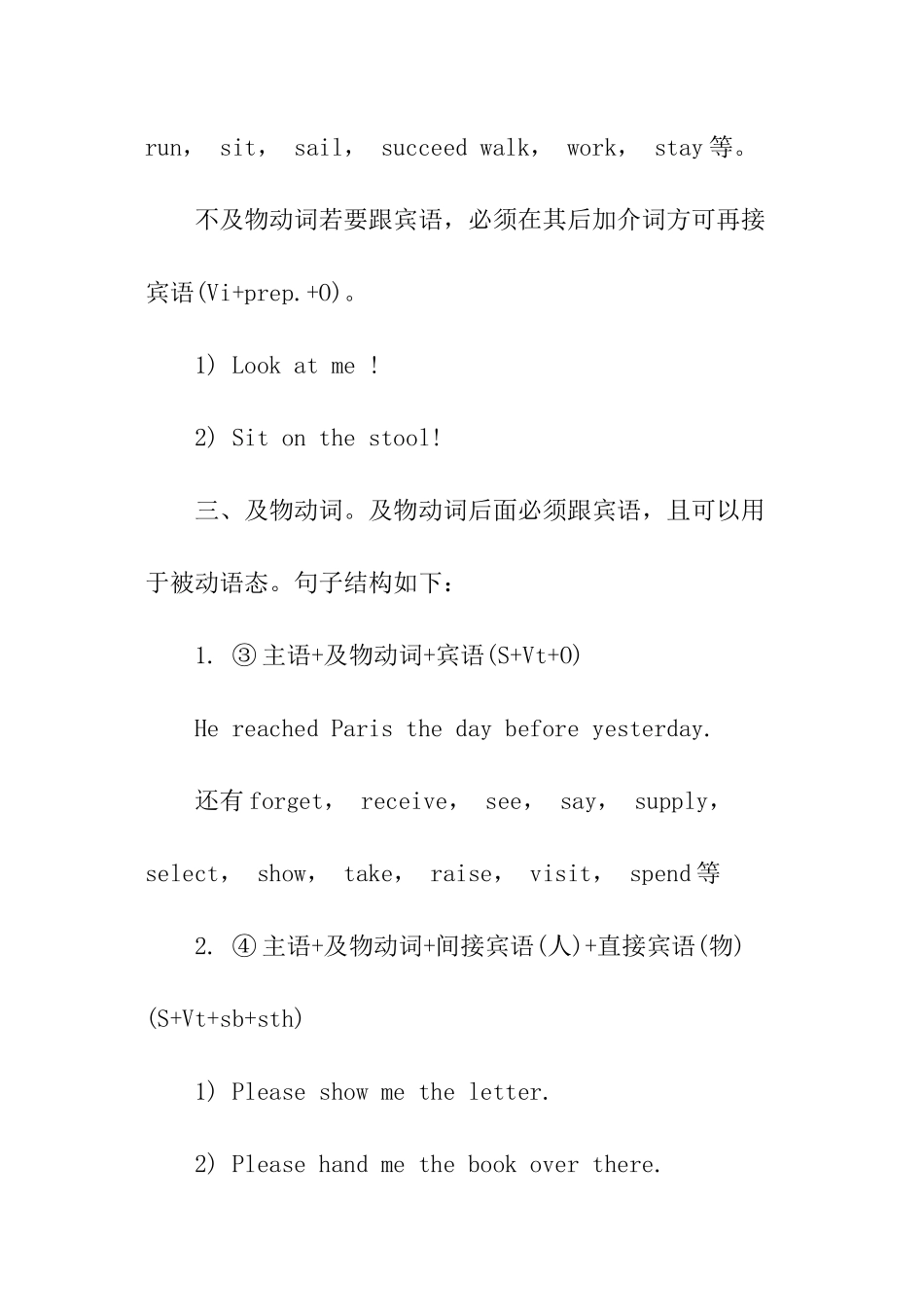高考英语动词词性分类及用法参考 连系动词不能独立做谓语,必须跟表语一起构成谓语。系动词后的表语可以是名词、代词、数词、形容词、分词、动名词、不定式、副词、介词短语、词组、从句等。系动词无被动形式。 (1) 表示特征或状态: be, look, seem, appear, smell, taste, sound, feel, turn out, prove 等。 1) It sounds a good idea. 2) This food tastes good. 3) The door remained closed. (2) 表示持续: keep, remain, stay, lie, stand 等。 1) I hope you will keep fit. 2) We can remain friends. 3) Please stay seated. (3) 表示变化: become, go, get, grow, turn, fall, come, run 等。 1) He went mad. 2) His hair turned grey. 3) I fell ill. 二、不及物动词。不及物动词后面通常不跟宾语,且无被动形式。句子结构:②主语+不及物动词(S+Vi)。 1) Birds can fly. 2) I can jump high. 其他不及物动词:agree, arrive, arise, belong, come, die, dive, exist, fall, flow, go, happen, hurry, rise, listen, look, rise, run, sit, sail, succeed walk, work, stay 等。 不及物动词若要跟宾语,必须在其后加介词方可再接宾语(Vi+prep.+O)。 1) Look at me ! 2) Sit on the stool! 三、及物动词。及物动词后面必须跟宾语,且可以用于被动语态。句子结构如下: 1. ③ 主语+及物动词+宾语(S+Vt+O) He reached Paris the day before yesterday. 还有 forget, receive, see, say, supply, select, show, take, raise, visit, spend 等 2. ④ 主语+及物动词+间接宾语(人)+直接宾语(物)(S+Vt+sb+sth) 1) Please show me the letter. 2) Please hand me the book over there. 3) Can you buy me a meal? 4) John has sent Betty a cheque of $1000. 5) I will give you the latest newsletter. 6) She made me a beautiful dress. 若要先说出直接宾语(事物),后说间接宾语(人),则要借助于介词 to 或 for, 如: 1) He brings cookies to me every day. 2) She made a beautiful dress for me.


